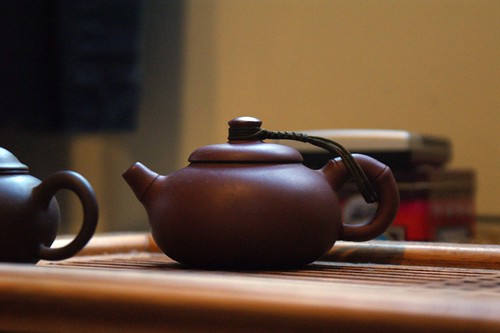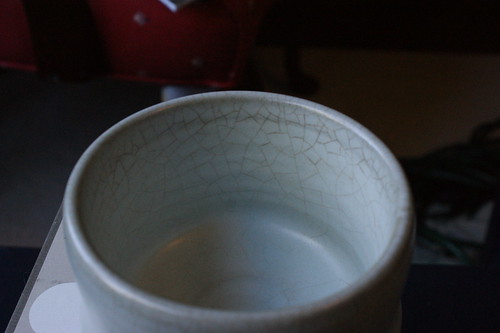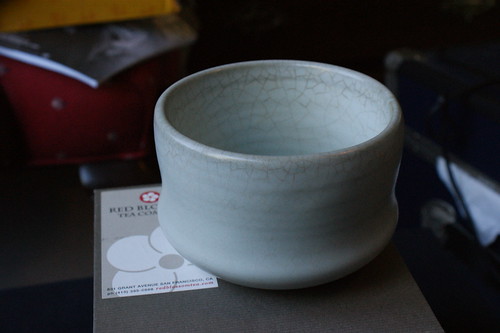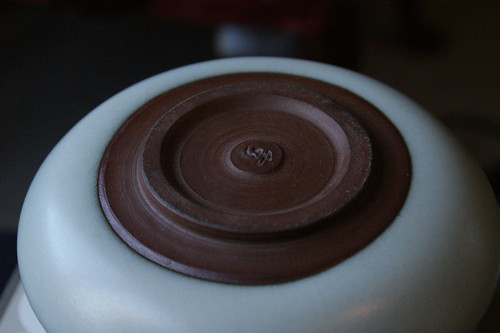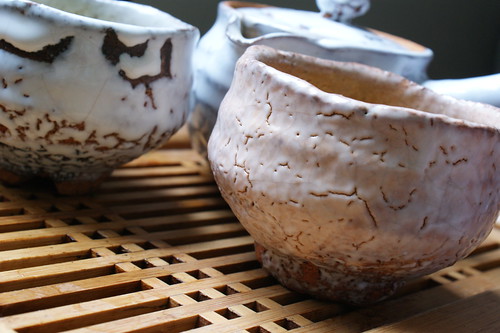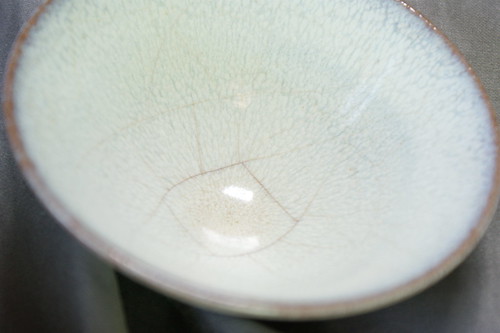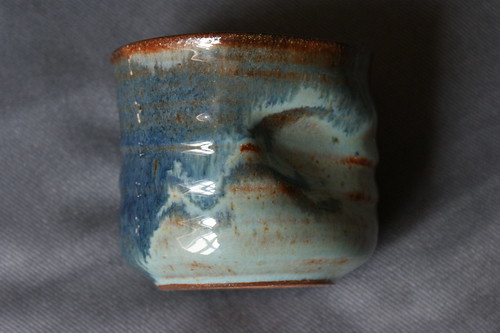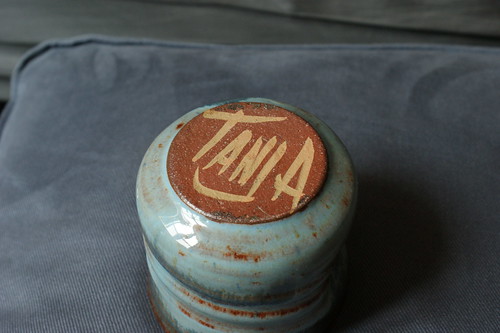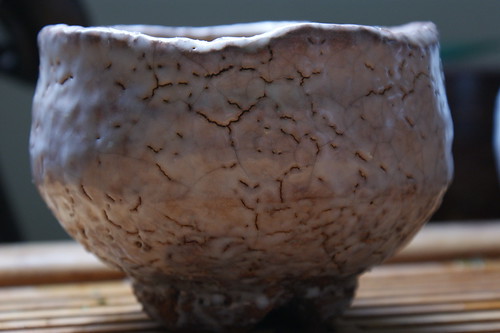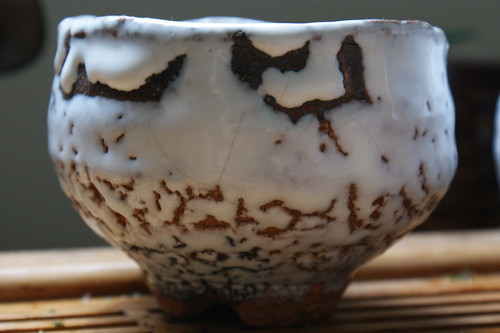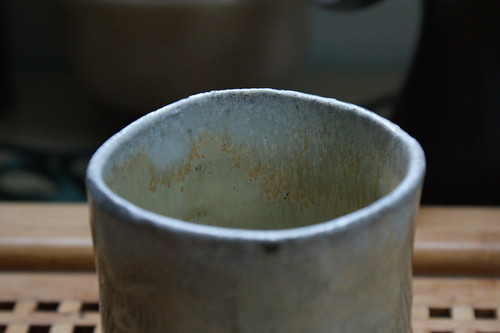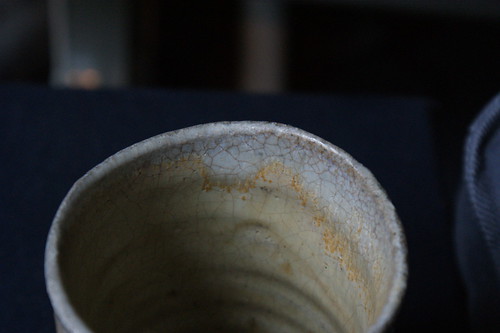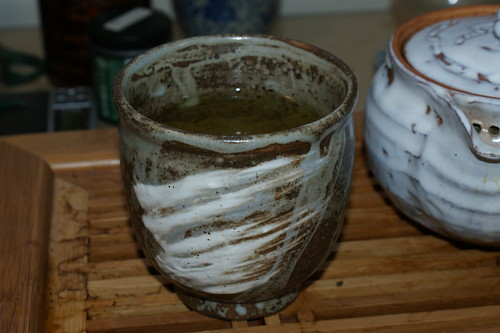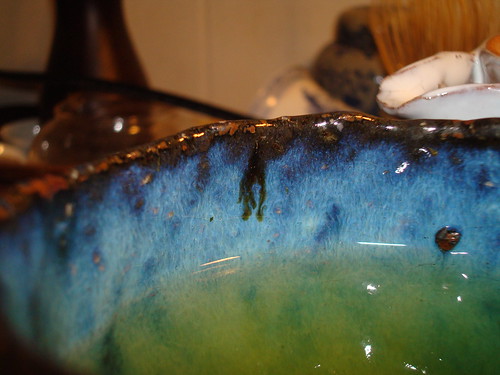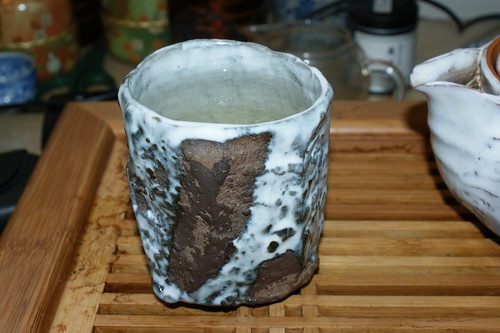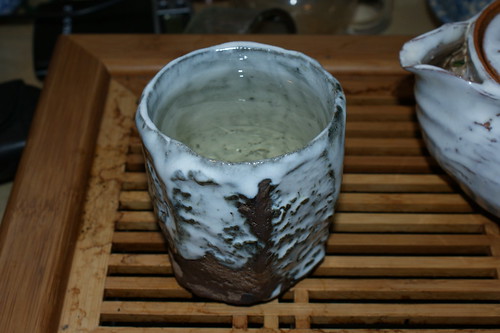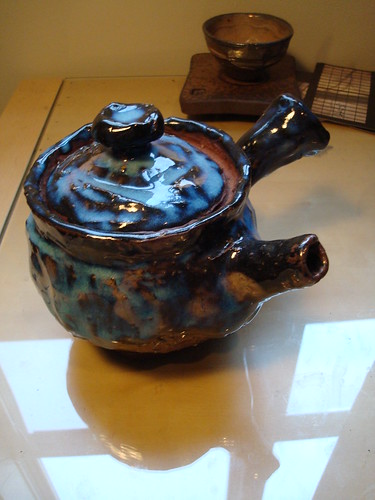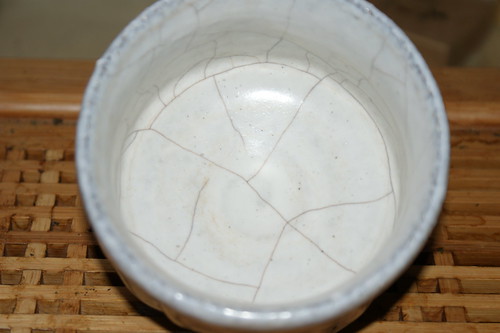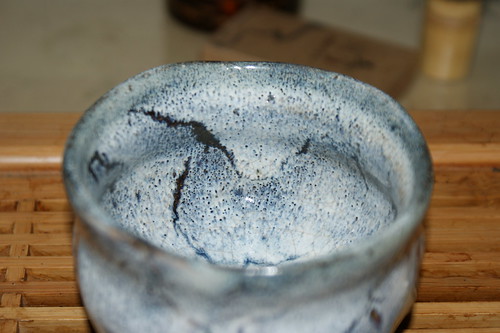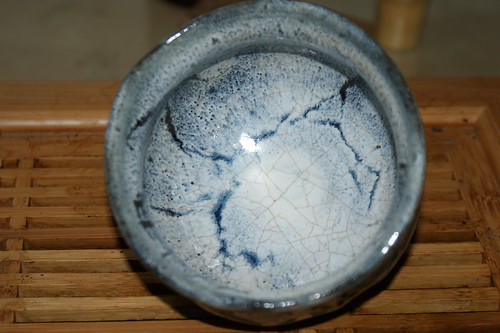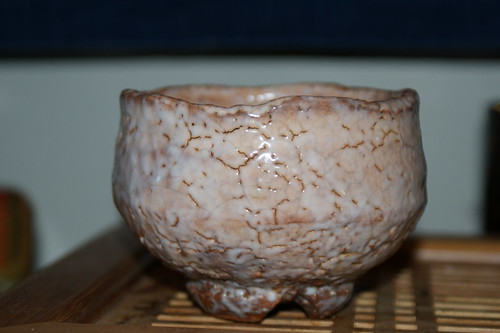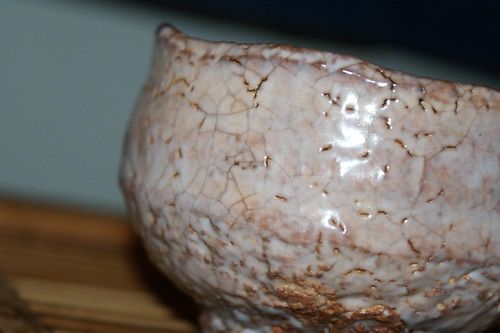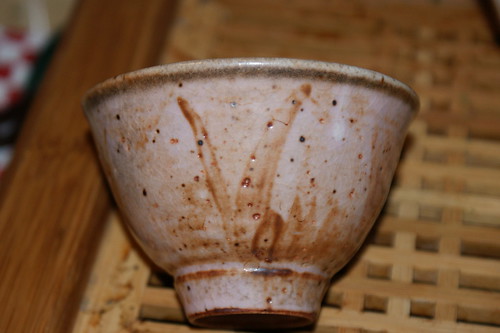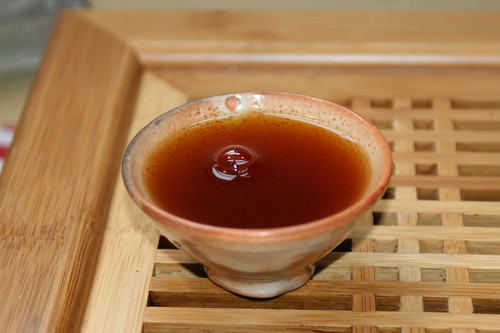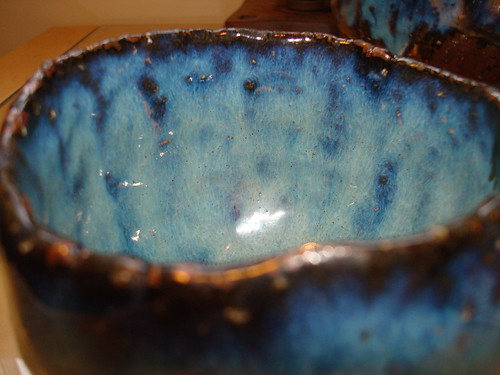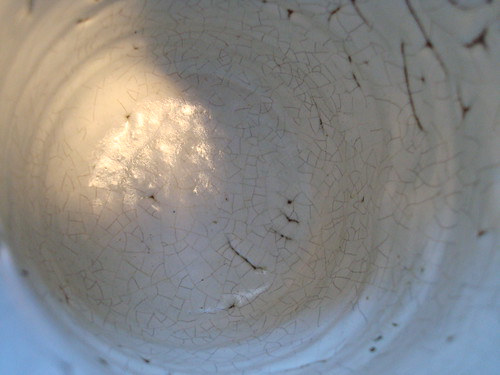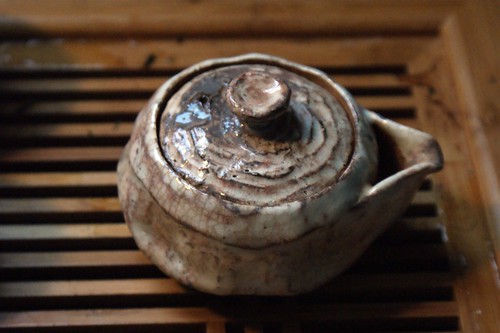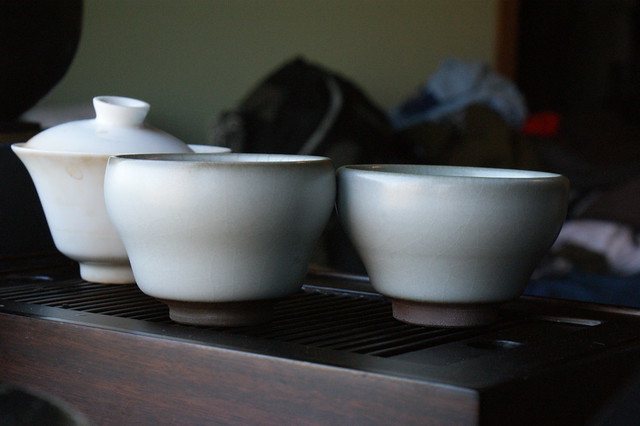
A Chistmas gift from my parents, these 50 ml celadon cups are the 2nd (and 3rd) pieces of celadon ware I have. There are many types of celadon, ranging from super glossy almost glassy looking, to this satin type of finish. The colors can also vary wildly from an almost blue color, to pale white, I have even seen some slightly brownish grey pieces.
The funny thing about these cups, is it was not until I took the above picture and looked at it, that I realized how incredibly different these two cups were. Yes they are the same basic shape, same color, but I honestly never fully realized that one is slightly shorter but much wider, while the other is more upright and taller. Its small details like those that give me a bit of comfort that yes these are actually hand made. And the differences are only noticeable when you have them side by side. If you held one in each hand, about a foot apart from each other, and looked at the one in each hand one at a time. In that situation I think almost anyone would deem both pieces identical.
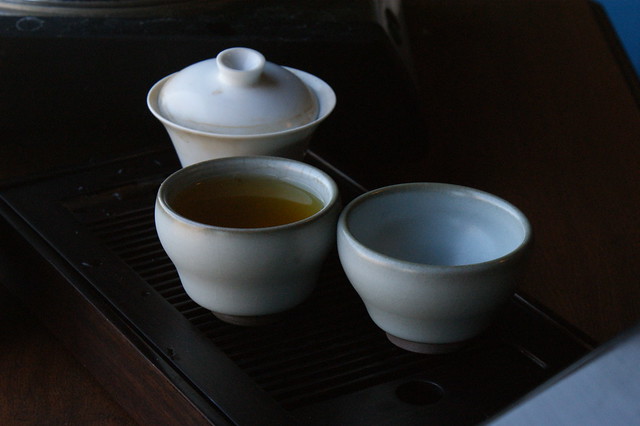
These pieces just reaffirm my new found fondness for celadon, although all 3 pieces I have are from the same artist Xu De Jia. And I am quite fond how (at least in this slightly aqua marine colored glaze) at the very rim of the cup there is a noticeable difference in the glaze.




